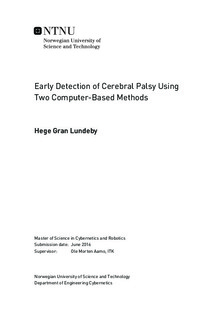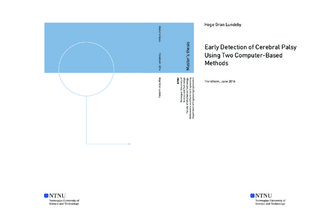| dc.description.abstract | In this master thesis the assignment was to perform a statistical analysis of two different computer-based methods, to see which one that had the highest predictive ability for fidgety movements in infants. One method has been in use at St. Olavs Hospital for a few years, and it is both reliable and effective. However, after a newly finished method performed even better last year, it was in everyone's interest to test both of these methods on a completely new set of infants.
This statistical analysis included two different approaches to test the performance of the chosen features. First, the principal component analysis was done to get an overview of the data and to find possible outliers. While the method from St. Olavs Hospital had no clear outliers, one was found in the data from Hodjat Rahmati. There was also found one clear similarity between the two methods. This was that none of the data sets managed to find enough coherence in the data to separate the different classifications from each other. In the partial least squares regression the similarities between the two methods ended. The method from St. Olavs Hospital reached at best 14,63% explained variance for the calibration and 11,56% for the validation with the features C_{sd}, Q_{mean} and Q_{sd}. This was quite weak compared to earlier results from this method, although these results are from a different form for evaluation. When it came to Hodjat Rahmati's method, the results were quite surprising. For the explained variance the calibration was quite good and reached a value of 93,85% at best. However, for some reason the validation fell downwards to a value of -180,73%. Because of this, the conclusion in the end was that the method from St. Olavs Hospital was marginally better.
Different reasons for these results have also been discussed, such as the data itself, the videos or the classification. Two different approaches showed that the data was most likely correct, while there were no way to check for either of the other two. | |

